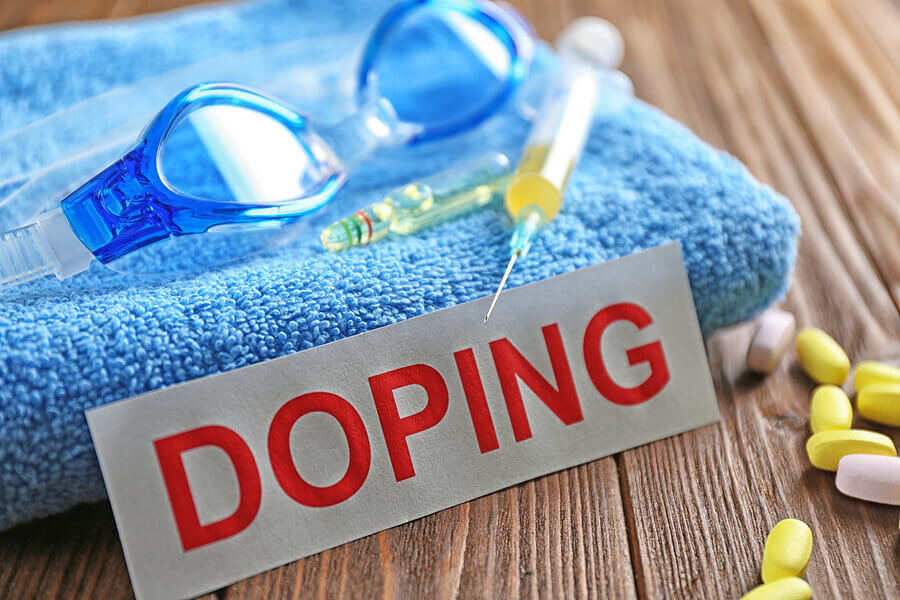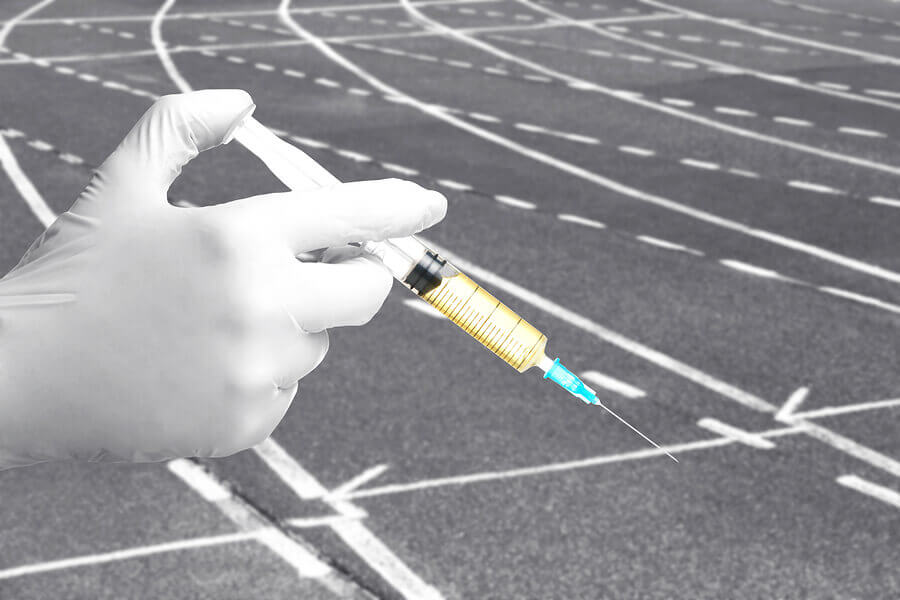EPO Doping in The Sports World: A History

Have you ever heard of EPO doping? If you follow any sport consistently, you probably have! Many athletes have used this substance to enhance sports performance. But before we get into the nitty-gritty, let’s have a look at EPO, what it is, and how it works.
What is EPO?
Simply put, EPO is a naturally occurring hormone found in the human body. Its full name is actually “erythropoietin”, and it comes from the liver.
However, its synthetic version has probably been the biggest trap in the history of world sport. The exact number of athletes who won competitions using EPO doping is still unknown. In 1998, several Tour de France athletes illegally used the hormone to boost their performances.
Nevertheless, using EPO as a drug started earlier. In fact, the use of synthetic EPO began in the 1980s. In 1986, the mass industrial production of this drug began under the acronym RhEpo. Three years later, the FDA approved the use of its synthetic format for the treatment of anemia. However, many experts think professional boxers started using it as a performance-enhancing drug as early as 1987.
History of EPO doping in sports
The drug expanded quickly among professional athletes after the eighties. In fact, many athletes labeled the substance label as a “miracle” for physical performance!
Sports historians think that the first competition where athletes used EPO was the 1988 Calgary Winter Olympics. At that time, there was no way to detect it or understand its effect at the sports level.
In 1998, the Tour de France scandal came to light. They discovered a huge international doping network on the Tour. This involved the technical, medical and cyclists of the Festina team, and the scandal forced a suspension.
A little while later, even the President of the International Cycling Union was involved in the doping case. The substance in the eye of the hurricane was the famous EPO.
After the Tour de France, investigators found several doping networks among other sports disciplines. The scandal was so big that the Festina case motivated the creation of the World Anti-Doping Agency in 1999. In an investigation published in 2013, experts concluded that at least 30 cyclists used EPO in the 1998 Tour.

EPO doping in the new millennium
After the 1998 uproar, the difficulties in the detection of synthetic EPO continued. In 2000, researchers patented the first hormone detection test. However, the problem with this illegal drug is that it becomes undetectable shortly after use. This was what made it a favorite among athletes!
In 2019, alarms rang over this subject. Experts discovered that injecting microdoses of EPO made the substance virtually undetectable, while still boosting sports performance.
Because of this, in the summer of that year, the French laboratory Chatenay-Malabry unveiled its new test for EPO detection. The novel test could detect the hormone even two days after being in the body.
Nevertheless, the new test isn’t validated by the World Anti-Doping Agency (WADA) yet. By summer 2020, experts state that the first anti-doping tests will happen using this system.

Legal consequences of EPO doping
According to the World Anti-Doping Code (WADC), doping implies ‘a violation of various anti-doping rules’. In other words, when using illicit substances, athletes can violate several sports rules, not just one.
EPO is on the List of Prohibited Substances by the Olympic Committee since the 1990s. Even when it was undetectable by the urine test, experts still considered it illegal. Of course, as of 2020, it remains on the lists updated annually by the WADA.
All athletes licensed by a federation may be subject to doping controls at any time. Likewise, the anti-doping regime governs all disciplines recognized as sports. In addition, many clubs in lower categories perform EPO doping tests as well.
The World Anti-Doping Code regulates banned substances in this area.
Anti-Doping Law in Spain
In Spain, the Organic Law 3/2013 governs the fight against doping. In this legal article, the use of doping substances is considered a ‘very serious’ violation. Only in some specific cases, the infraction can have a lower severity.
For example, a “severe” doping penalty happens when the athlete can reasonably explain the illegal substance in his body. In addition, doping sanctions extend to federations, teams and the technical directive.
The penalties for serious infractions imply the suspension of the federative license for one or two years. In addition, transgressive athletes may receive fines ranging from 3,000 to 12,000 euros. In the case of very serious infractions, suspensions can be raised to four years or even for life, depending on the offense committed.
Have you ever heard of EPO doping? If you follow any sport consistently, you probably have! Many athletes have used this substance to enhance sports performance. But before we get into the nitty-gritty, let’s have a look at EPO, what it is, and how it works.
What is EPO?
Simply put, EPO is a naturally occurring hormone found in the human body. Its full name is actually “erythropoietin”, and it comes from the liver.
However, its synthetic version has probably been the biggest trap in the history of world sport. The exact number of athletes who won competitions using EPO doping is still unknown. In 1998, several Tour de France athletes illegally used the hormone to boost their performances.
Nevertheless, using EPO as a drug started earlier. In fact, the use of synthetic EPO began in the 1980s. In 1986, the mass industrial production of this drug began under the acronym RhEpo. Three years later, the FDA approved the use of its synthetic format for the treatment of anemia. However, many experts think professional boxers started using it as a performance-enhancing drug as early as 1987.
History of EPO doping in sports
The drug expanded quickly among professional athletes after the eighties. In fact, many athletes labeled the substance label as a “miracle” for physical performance!
Sports historians think that the first competition where athletes used EPO was the 1988 Calgary Winter Olympics. At that time, there was no way to detect it or understand its effect at the sports level.
In 1998, the Tour de France scandal came to light. They discovered a huge international doping network on the Tour. This involved the technical, medical and cyclists of the Festina team, and the scandal forced a suspension.
A little while later, even the President of the International Cycling Union was involved in the doping case. The substance in the eye of the hurricane was the famous EPO.
After the Tour de France, investigators found several doping networks among other sports disciplines. The scandal was so big that the Festina case motivated the creation of the World Anti-Doping Agency in 1999. In an investigation published in 2013, experts concluded that at least 30 cyclists used EPO in the 1998 Tour.

EPO doping in the new millennium
After the 1998 uproar, the difficulties in the detection of synthetic EPO continued. In 2000, researchers patented the first hormone detection test. However, the problem with this illegal drug is that it becomes undetectable shortly after use. This was what made it a favorite among athletes!
In 2019, alarms rang over this subject. Experts discovered that injecting microdoses of EPO made the substance virtually undetectable, while still boosting sports performance.
Because of this, in the summer of that year, the French laboratory Chatenay-Malabry unveiled its new test for EPO detection. The novel test could detect the hormone even two days after being in the body.
Nevertheless, the new test isn’t validated by the World Anti-Doping Agency (WADA) yet. By summer 2020, experts state that the first anti-doping tests will happen using this system.

Legal consequences of EPO doping
According to the World Anti-Doping Code (WADC), doping implies ‘a violation of various anti-doping rules’. In other words, when using illicit substances, athletes can violate several sports rules, not just one.
EPO is on the List of Prohibited Substances by the Olympic Committee since the 1990s. Even when it was undetectable by the urine test, experts still considered it illegal. Of course, as of 2020, it remains on the lists updated annually by the WADA.
All athletes licensed by a federation may be subject to doping controls at any time. Likewise, the anti-doping regime governs all disciplines recognized as sports. In addition, many clubs in lower categories perform EPO doping tests as well.
The World Anti-Doping Code regulates banned substances in this area.
Anti-Doping Law in Spain
In Spain, the Organic Law 3/2013 governs the fight against doping. In this legal article, the use of doping substances is considered a ‘very serious’ violation. Only in some specific cases, the infraction can have a lower severity.
For example, a “severe” doping penalty happens when the athlete can reasonably explain the illegal substance in his body. In addition, doping sanctions extend to federations, teams and the technical directive.
The penalties for serious infractions imply the suspension of the federative license for one or two years. In addition, transgressive athletes may receive fines ranging from 3,000 to 12,000 euros. In the case of very serious infractions, suspensions can be raised to four years or even for life, depending on the offense committed.
All cited sources were thoroughly reviewed by our team to ensure their quality, reliability, currency, and validity. The bibliography of this article was considered reliable and of academic or scientific accuracy.
- Web oficial Agencia Mundial Antidopaje. Extraído de: https://www.wada-ama.org/
- Ley Orgánica 3/2013, de 20 de junio, de protección de la salud del deportista y lucha contra el dopaje en la actividad deportiva. Extraído de: https://www.boe.es/diario_boe/txt.php?id=BOE-A-2013-6732
This text is provided for informational purposes only and does not replace consultation with a professional. If in doubt, consult your specialist.








